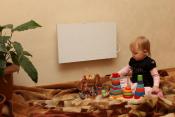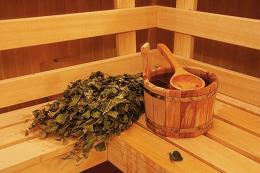Search
Login
Recommended
I want to build a sauna myself, with my own hands, we build a sauna in stages
The rivalry of the Russian bath and sauna is gaining momentum daily. Fans of a real Russian steam room zealously defend their positions, but, despite this. The popularity of saunas is only increasing. The principal differences between steam baths and saunas are temperature indicators and the level of humidity, which have a completely different effect on the human body.
Content
- Pros and cons of building a sauna
- How to build a sauna video
- How to design a sauna
- We build a sauna with our own hands
- Choosing stones for a sauna video
- Sauna decoration
Pros and cons of building a sauna

Before you decide on building a sauna, you need to really appreciate all of its characteristics. Many believe that the harm of a sauna far exceeds the benefits it brings. These statements are not unfounded, because dry hot air, which reaches a temperature of 130 degrees, can be fatal for hypertensive patients and for people suffering from vascular diseases. In order to avoid feeling unwell when visiting the sauna, you need to split the time spent in the steam room for short periods and pour cool water between the entrances to the steam room. To protect the skin from burns, it is recommended to remove all jewelry, and cover the head and ears with a special felt hat. Subject to these rules, being in the sauna will bring only benefit, and the grateful body will respond to younger, toned skin and remarkable well-being.
How to design a sauna
The design of the sauna can be drawn up independently. To do this, you need to determine in advance the number of people who will simultaneously take bath procedures. When planning the construction, keep in mind that for each person should be at least 5m of the total bath area. Next, you need to calculate the heat transfer from the heater, because the furnace installed in the steam room should properly warm up the entire room. Plan the location of the bathing shelves, they should be at least one meter from the stove. The distance between the levels of the shelves should be about 45-50 cm, and their width should be sufficient so that a person of average build could freely lie on their backs. After calculating all this data and making rough drafts, you can decide whether you are comfortable with the size of the sauna or if you want to build something larger.

We build a sauna with our own hands
Any construction begins with foundation fill. Sauna is no exception and the foundation for it must be erected with special care. For a building of this type, it is best to fill in the strip foundation, which should be deepened by at least 75 cm. The width of the foundation for the log structure should be about 25-30 cm, the height of the aboveground part is 20 cm. This is quite enough for a wooden log house. In the basement base, make small holes for air ventilation, this is necessary to combat dampness and high humidity.

Materials for construction are selected based on opportunities and personal preferences, but still the sauna should be built of wood, which, when heated, will release useful substances that have a healing effect on the body. For a log cabin, a larch is ideal, which is not afraid of constant humidity and temperature changes. You can use both round wood and larch timber.

Since we are building a sauna, the next step involves choosing a floor design and a wastewater discharge system. Since we have an environmentally friendly sauna, built exclusively of wood, then the floors also need to be laid wooden.
A drainage system for water flow can be equipped by digging a pit near the outer wall of the bath and removing a tray or pipe into it from under the washing compartment. For floors, it is better to use larch again, since pine or spruce very quickly become unusable due to constant humidity. If there is an opportunity to purchase planed sawn timber with tenon grooves, then laying it will not be difficult. The main thing is to carefully fit all the boards to each other. In the absence of such an opportunity, a simple edged board with a thickness of about 50 mm is suitable. It is laid closely, and in the washing compartment above the drainage pipe or tray, several holes for wastewater are drilled.

After the flooring, the sauna stove is installed on a foundation prefilled under it. There is no need to lay out the brick structure, since a metal stove, with a water tank of 60-70 liters and a large heater, can cope with the creation of the desired temperature in the sauna. For a heater, it is best to pre-select river cobblestones that hold the temperature perfectly and do not crack when heated.

The roof and ceiling must be insulated. For this, you can use any heat-insulating material. The easiest way is to make a false ceiling, which will reliably protect the room from the cold. It is done very simply ceiling ceilings are sewn from the inside with finishing material. It can be either a lining or a simple edged board. Further work is done from the attic. In between the ceiling beams, a vapor barrier film is laid over which heat-insulating materials are placed. On top of this multi-layer cake is covered with a waterproofing film. Then a wooden floor is laid. The roof is insulated in a similar way. Between the roof rafters from the inside, waterproofing is attached, then insulation layers are inserted between them and then all this is closed by vapor barrier.
Sauna decoration
In order to complete the construction process, a sauna finish is also needed. Traditionally, linden and aspen are used to decorate the steam room.
Aspen wall paneling, which is lined with walls in the bathhouse, does not heat up, does not rot for a long time and has a number of healing properties. In the old days it was believed that aspen drives away devils, and therefore, products from this tree species were necessarily present in the bathhouse. In fact, it is scientifically proven that when heated, aspen emits special substances that have a beneficial effect on the nervous system, literally dissolving and sucking up all the accumulated problems. Along with slag, in a steam room sheathed with aspen, accumulated fatigue and excessive nervousness come out.

Linden does not lag behind the aspen, and in some ways even surpasses it. Dried linden wood has a stone hardness and feels slightly silky and warm to the touch. Lining of linden has a warm pinkish color that does not darken even with prolonged use. One can talk endlessly about the healing properties of linden, but it acts best as an energy donor, emitting a light aroma of honey and herbs when heated. A bathhouse entirely composed of linden logs was called a royal bath and a lot of virtues were attributed to it. All these positive aspects make linden an ideal material for sauna decoration.

In conclusion, I want to say that a do-it-yourself sauna is not built in one day. It will have to invest a lot of effort and money, but if everything is done correctly and efficiently, then the pleasure brought by it will not be compared with anything.





